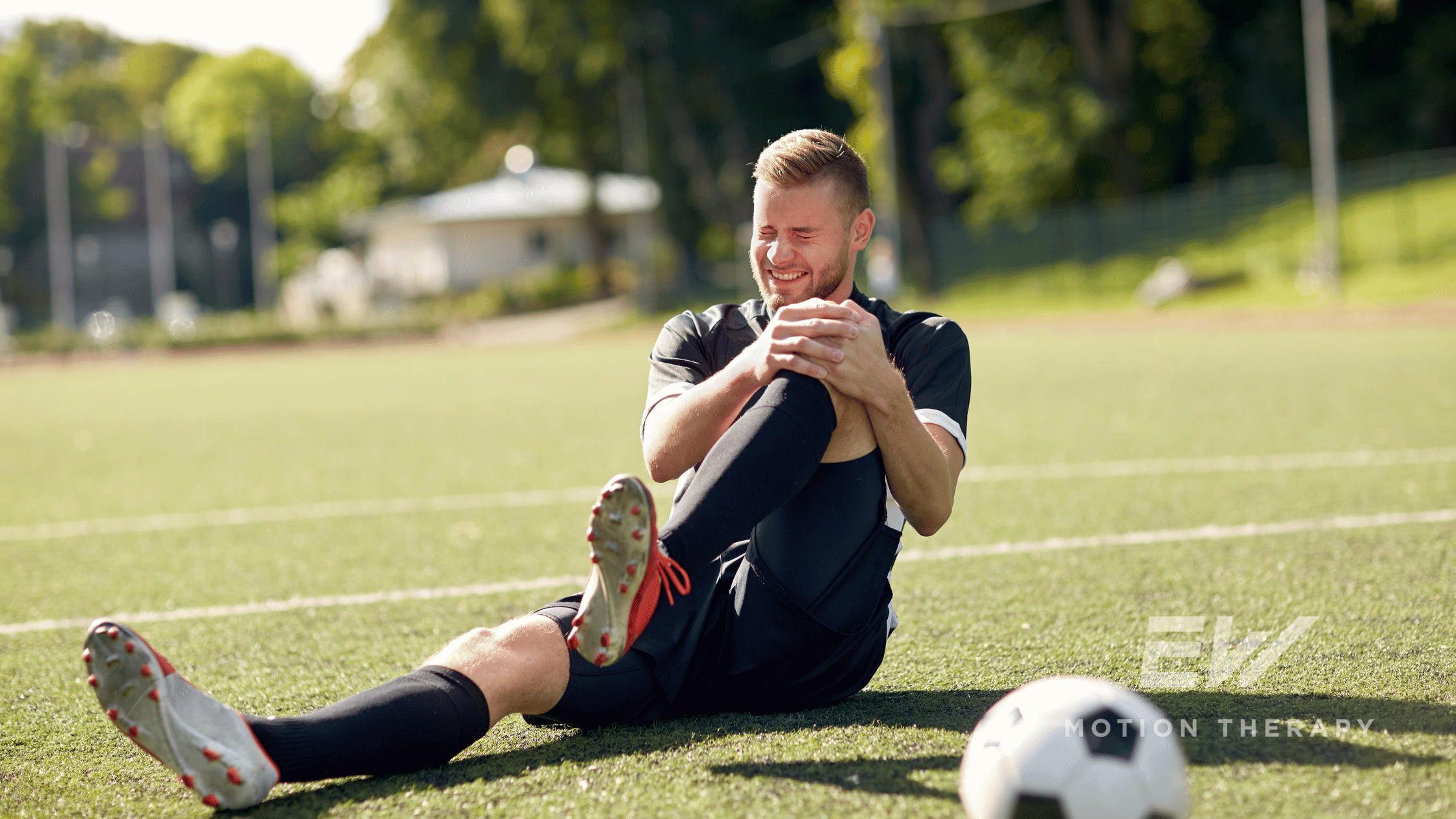Understanding and Managing Patellofemoral Pain Syndrome (PFPS)

Licensed Physical Therapist, PT, DPT // EW Motion Therapy Homewood
Knee pain is a common condition that affects individuals across all demographics, often limiting the ability to perform daily activities or participate in physical exercise and sport. Patellofemoral Pain Syndrome (PFPS) is one of the leading causes of knee pain, impacting approximately 22.7% of the general population. This condition does not discriminate—affecting everyone from an elite marathoner to a parent trying to squat to play with their toddler on the floor. Women are twice as likely as men to experience PFPS, and 1 in 14 adolescents will encounter this condition during their development. Understanding the causes, symptoms, and treatment options for PFPS is crucial for effective management and long-term relief.
What is the role of the patella?
The patella, commonly referred to as the kneecap, plays a critical role in knee function. This triangular, floating bone acts as a pulley, helping to extend the lower leg by transmitting force from the quadriceps muscle through the patellar tendon to the tibia.
In a healthy knee, the patella glides smoothly within the patellofemoral groove of the femur during movement. Dysfunction arises when the patella is misaligned or fails to track properly, leading to friction and irritation within the joint. This misalignment results in inflammation and pain, the hallmarks of PFPS.

Recognizing the symptoms of PFPS
Patellofemoral Pain Syndrome presents with a variety of symptoms, which may include:
- Pain around or behind the kneecap: This discomfort is often exacerbated by activities like running, squatting, jumping, or climbing stairs.
- Discomfort with prolonged sitting: Sometimes called “moviegoer’s sign,” individuals may feel an ache in their knee during extended periods of sitting with bent knees.
- Grinding or clicking sensations: Movement may produce these sensations within the knee.
- Swelling or instability: The knee may feel swollen, weak, or unstable, especially during activity.
Common causes of PFPS
PFPS is often the result of a combination of overuse, biomechanical issues, and muscle imbalances. Key contributing factors include:
- Overuse: Repetitive, high-impact activities like running or jumping can irritate the underside of the patella.
- Muscle imbalances: Weakness in the quadriceps, hamstrings, hip muscles, and calves can lead to abnormal patellar tracking.
- Patellar misalignment: Structural or anatomical factors, such as a rotated hip or a misaligned patella, can produce uneven movement mechanics at the joint.
- Foot mechanics: Overpronation (excessive inward foot rotation), low arches, or other abnormalities can increase stress on the knee.
- Improper footwear: Shoes that fail to support proper biomechanics may contribute to PFPS.
- Poor running form: A breakdown in form from fatigue or from lack of strength resulting in faulty running mechanics can amplify stress on the knees.
Diagnosing PFPS
A diagnosis of PFPS begins with a comprehensive assessment by a healthcare professional. The process typically includes:
- Medical history: Understanding the patient’s activity levels, symptoms, and any prior knee injuries.
- Physical examination: Evaluating knee alignment, swelling, and range of motion, along with specific tests to reproduce symptoms.
- Gait analysis: For active individuals, a physical therapist may perform a gait analysis to identify abnormalities in walking or running patterns.
- Imaging: X-rays or MRIs are sometimes used to rule out other conditions, such as ligament tears or arthritis.
Early and accurate diagnosis is essential for effective treatment.
Treatment options for PFPS
Managing PFPS requires a multi-faceted approach that targets the root causes of pain. Below are key treatment strategies:
- Strengthening exercises: Building strength in specific muscle groups can improve patellar alignment and knee stability. Recommended exercises include:
- Quadriceps: Mini squats, wall sits, and split squats.
- Glutes and hips: Clamshells, bridges, and side-lying leg raises.
- Single-leg stability: Bulgarian split squats, single-leg Romanian deadlifts, and standing fire hydrants.
- Stretching and mobility work: Stretching the quadriceps, hamstrings, calves, and hip muscles can alleviate tightness that contributes to poor knee mechanics.
- Gait and running analysis: For athletes and runners, adjusting foot mechanics and improving running form can significantly reduce knee strain. This may involve:
- Wearing orthotics for foot support.
- Transitioning to footwear that enhances biomechanics.
- Manual therapy: Massage, joint mobilization, and soft tissue manipulation can reduce pain and improve mobility in the knee.
- Core strengthening: Improved core stability enhances overall movement mechanics and lower body control. Exercises like planks, bear crawls, and Pallof presses are effective.
- Gradual return to activity: Once pain subsides and strength improves, individuals should reintroduce physical activities gradually under professional guidance to prevent re-injury.
The role of physical therapy in PFPS treatment
Physical therapy plays a vital role in addressing PFPS by:
- Identifying dysfunctional movement patterns.
- Developing personalized exercise programs to correct imbalances.
- Providing education on proper techniques for running, stretching, and training.
- Guiding progressive reintroduction to physical activities.
Patellofemoral Pain Syndrome is a widespread but manageable condition that can significantly impact quality of life. While rest may offer temporary relief, addressing the underlying causes is crucial for long-term recovery. With proper treatment—including strengthening exercises, mobility work, and professional guidance—individuals can regain pain-free movement and prevent recurrence.
If you’re struggling with knee pain, consider consulting a physical therapist to develop a tailored plan for your recovery. With the right approach, you can overcome PFPS and return to the activities you love. We consider it a privilege at EW Motion Therapy to help our patients recover from pain so they can continue their favorite activities. To learn more about whether physical therapy is right for you, click the button below to download our answers to 20 frequently asked questions.
.png)

